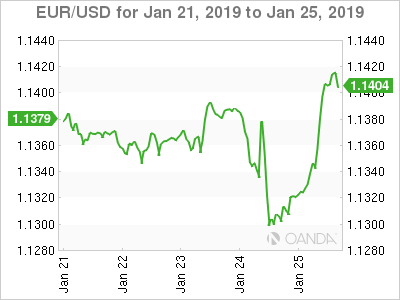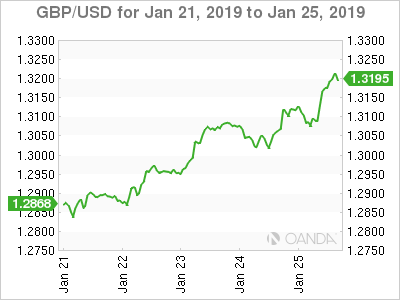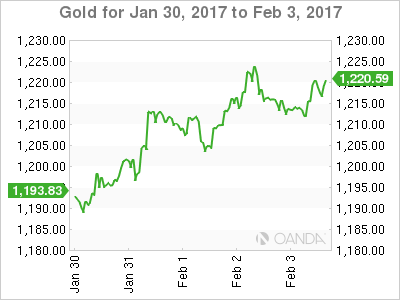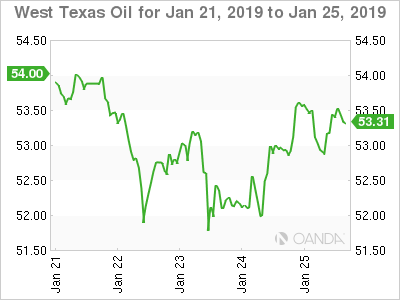The US dollar is weaker across the board on Friday after President Trump reached a deal to reopen the Federal government. Washington will continue to operate amidst political uncertainty at the discussed agreement is only until February 15 when a new shutdown could occur if Democrats and the GOP don’t reach a deal on the border wall.
The U.S. Federal Reserve will publish its Federal Open Market Committee (FOMC) statement on Wednesday, January 30 at 2pm EST, with Chair Jerome Powell hosting a press conference at 2:30pm EST. The Fed signalled on Friday that it could slow down the balance sheet reduction program put in place to keep tightening monetary policy also putting pressure on the USD.
- US Federal Reserve to keep rate unchanged
- Fed Chief Powell could confirm a pause in tightening
- US to have added 170,000 jobs in January
Dollar Softens as Fed Ready to Hit Rate Hike Pause
EUR/USD rose 0.46 percent in the last five trading days. The single pair is trading at 1.1414 ahead of a busy week of US economic indicators releases. The euro was higher on Friday as investors sold the dollar searching for higher yields. Political uncertainty in Washington is keeping investors from flocking to the US dollar ahead of the weekend.

The US rose last year as geopolitical factors and the support of the central bank’s efforts to normalize interest rates. The Fed had tightened monetary policy by raising rates, but also by unwinding the massive balance sheet it had accumulated as part of its quantitive easing program. Friday’s report in the WSJ about a possible end or long-term pause to the balance sheet reduction was a positive for stocks, but a negative to the US dollar.
US-China trade concerns remain, but they are moving to the background as the uncertainty on the US shutdown lessened with a short term agreement and the Fed is to take center stage with dovish expectations from the market. The US U.S. non farm payrolls (NFP) report is expected to keep showing that American employment is solid.
Pound Surges on Lower No-Deal Odds
The British pound surged in the last five trading days. GBP/USD rose 2.55 percent as the no-deal Brexit option is dropping in probability. The market could be too optimistic as Prime Minister Theresa May still has to present a proposal that satisfies UK PMs as well as remain close to what was agreed with the EU. The fact that no-deal is the least favoured option could be used as leverage to get some compromise on the UK side.

Gold Gains as Fed Signals Less Tightening
Gold rose 1.41 percent on Friday. The yellow metal gained ahead of what is expected to be a dovish Fed statement and the weakness of the US dollar. The US central bank is heavily anticipated to pump the brakes on its interest rate hike policy, and even stop its balance sheet reduction program.

The yellow metal will continue to be an option for investors if volatility rises during the week on any development from Brexit, Venezuela and the US-China trade war. US economic indicators schedule this week could also keep gold from rising next week. US employment and manufacturing data remain solid and could boost the greenback.
Crude Gains on Friday on Soft Dollar Venezuela Anxiety
Energy prices rose on Friday, but could not offset the losses of the week. West Texas Intermediate lost 0.7 percent and Brent 1.8 percent as lower demand impacted by falling global growth forecasts. Rising supplies continue to put downward pressure on crude prices despite the efforts of the Organization of the Petroleum Exporting Countries (OPEC) and other major producers to limit production.
Rising US output and the possible European bypass of US sanctions on Iranian crude offset any disruptions caused by the political situation in Venezuela.

Monday, January 28
- 9:00am EUR ECB President Draghi Speaks
Tuesday, January 29
- 10:00am USD CB Consumer Confidence
- 7:30pm AUD CPI q/q
Wednesday, January 30
- 2:00pm USD FOMC Statement
- 2:00pm USD Federal Funds Rate
- 2:30pm USD FOMC Press Conference
Thursday, January 31
- 8:30am CAD GDP m/m
Friday, Feb 1
- 8:30am USD Average Hourly Earnings m/m
- 8:30am USD Non-Farm Employment Change
- 8:30am USD Unemployment Rate
- 10:00am USD ISM Manufacturing PMI












